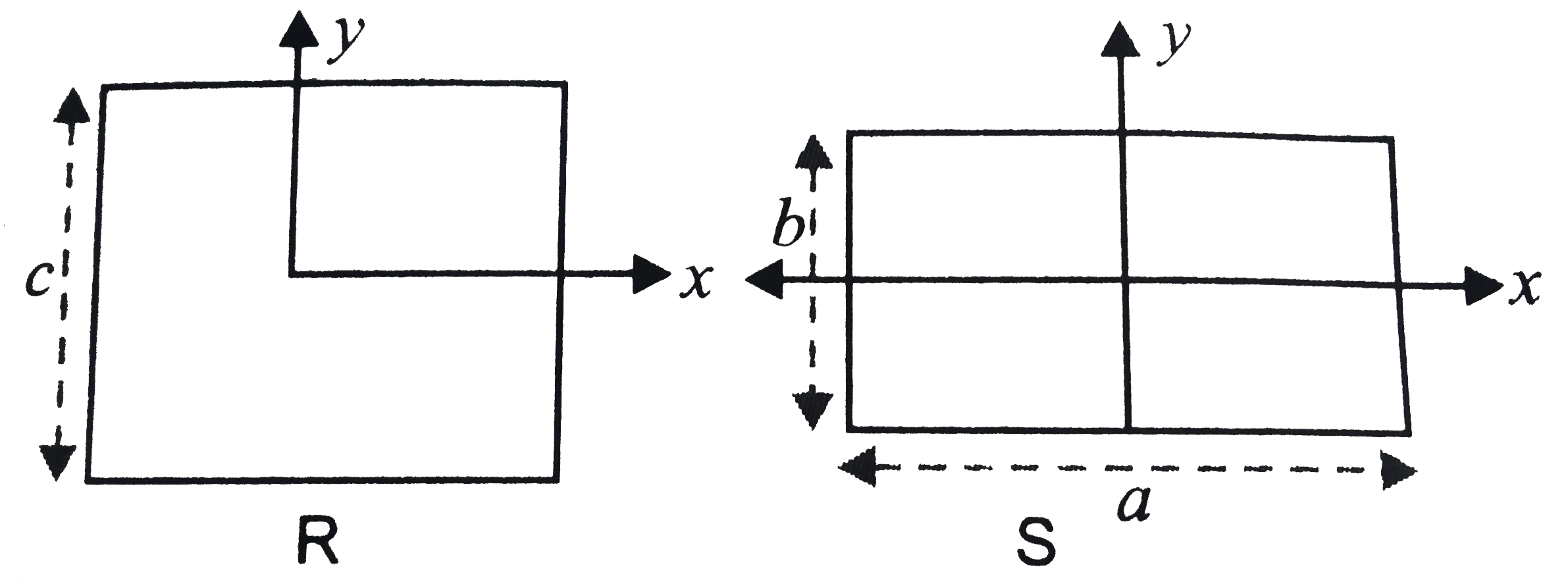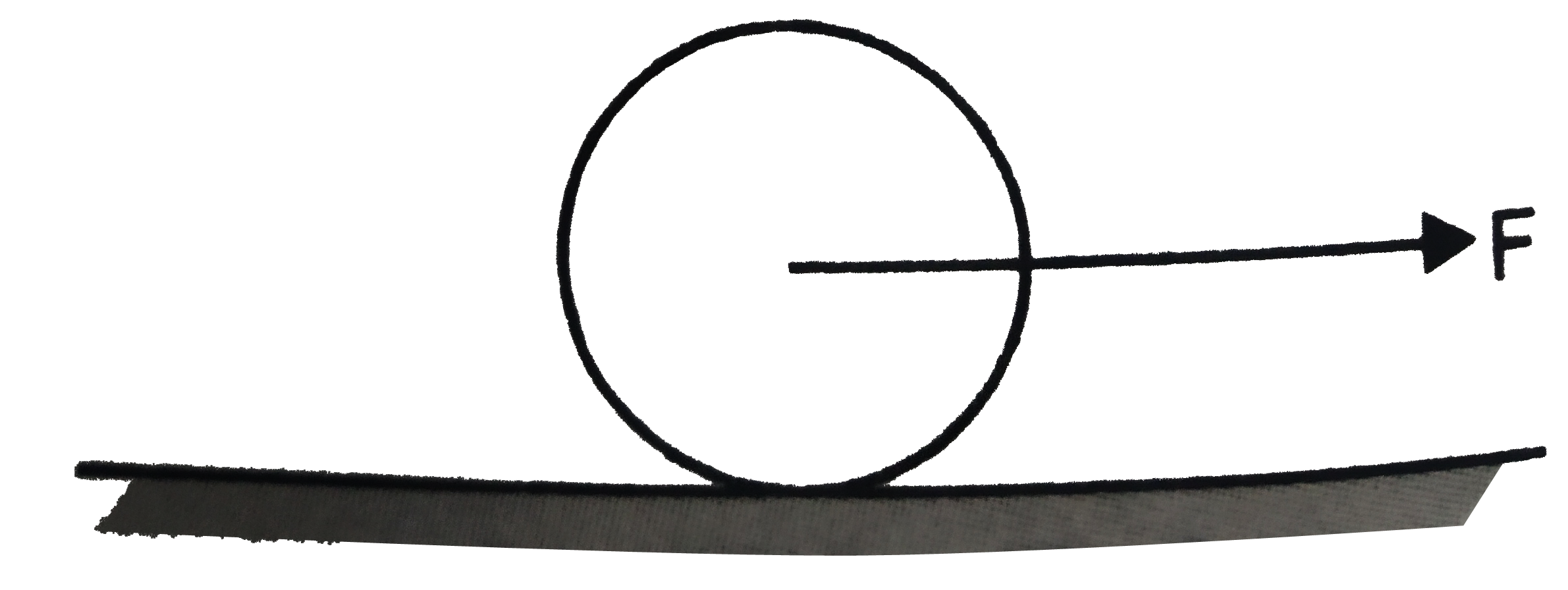Complete Solutions to LONG ANSWER QUESTIONS of chapter SYSTEMS OF PARTICLES AND ROTATIONAL MOTION of Class 11 book with complete answers and questions
| Class 11 | PHYSICS |
| Chapter | SYSTEMS OF PARTICLES AND ROTATIONAL MOTION |
| PRADEEP | LONG ANSWER QUESTIONS |
| Number Of Questions | 26 |
| Academic Year | 2023-24 |
Obtain an expression for the position vector of centre of mass of a two particle system.
08:28View SolutionObtain an expression for the position vector of centre of mass of a system of `n` particles.
04:19View SolutionShow that centre of mass of an isolated system moves with a uniform velocity along a straight line path.
04:56View SolutionDiscuss atleast three examples of the motion of centre of mass.
02:59View SolutionBriefly discuss the concept of torque or moment of a force.
07:52View SolutionDerive an expression for torque in cartesian co-ordinates.
03:16View SolutionObtain a expression for torque in polar co-ordinates.
04:36View SolutionExplain the concept of angular momentum and obtain an expression for it in cartesion co-ordinates.
07:00View SolutionDiscuss the physical meaning of angular momentum.
02:15View SolutionBriefly explain equilibrium of a rigid body. When is a body said to be in partial equilibrium ?
02:05View SolutionObtain an expression for kinetic energy of rotation of a body. Hence define moment of inertia of the body. Explain its physical significance.
05:26View SolutionEstablish a relation between torque and moment of inertia of a rigid body.
05:31View SolutionEstablish a relation between angular momentum and moment of inertia of a rigid body.
05:43View SolutionState and explain the principle of conservation of angular momentum. Give atleast two examples.
04:45View SolutionState and prove theorem of parallel axes.
06:58View SolutionState and prove theorem of perpendicular axes.
03:50View SolutionDerive an expression for moment of inertia of a thin circular ring about an axis passing through its centre and perpendicular to the plane of the ring.
02:43View SolutionObtain an expression for moment of inertia of a uniform circular disc about a diameter of the disc.
03:16View SolutionDiscuss rolling without slipping of a cylinder down a rough inclined plane and obtain an expression for the coefffcient of friction necessary for the same.
09:27View SolutionDraw analogy between rotational motion and translational motion.
04:48View SolutionFind the centre of mass of a unifrom (a) half-disc,(b) quarter-disc.
06:51View SolutionTwo discs of moments of inertia `I_(1) and I_(2)` about their respective axes (normal to the disc and passing through the centre) and rotating with angular speeds `omega_(1) and omega_(2)` are brought into contact face to face with their axes of rotation coincident.
(a) Does the law of conservation of angular momentum apply to the situation ? Why ?
(b) Find the angular speed of the two-disc system.
(c ) Calculate the loss in kinetic energy of the system in the process.
(d) Account for this loss.08:40View SolutionA disc of radius `R` is rotating with an angular speed `omega_(0)` about a horizontal axis. It is placed on a horizontal table. The coefficient of kinetic friction is `mu_(k)`.
(a) What was the velocity of its centre of mass before being brought in contact with the table ?
(b) What happens to the linear velocity of a point on its rim when placed in contact with the table ?
(c ) What happens to the linear speed of the centre of mass when disc is placed in contact with the table ?
(d) Which force i sresponsible for the effects in (b) and (c ).
(e) What condition should be satisfied for rolling to begin ?
(f) Calculate the time taken for the rolling to begin.10:29View SolutionTwo cylindrical hollow drums of radii `R and 2R`, and of a commom height h, are rotating with angular velocities `omega` (anti-clockwise) and `omega` (clockwise), respectively. Their axes, fixed are parallel and in a horizontal plane separated by `(3R + delta)`. They are now brought in contact `(delta rarr 0)`.
(a) Show the frictional forces just after contact.
(b) Identify forces and torque external to the system just after contact.
(c ) What would be the ratio of final angular velocities when friction ceases ?05:37View SolutionA unifrom square plate `S (side c)` and a unifrom rectangular plate `R(side b,a)` have identical areas and mass [Fig.]
Show that
(i) `I_(xR)//I_(xS) lt 1`, (ii) `I_(yR)//I_(yS) gt 1`, (iii) `I_(zR)//I_(zS) gt 1`.
 06:46View Solution
06:46View SolutionA unifrom disc of radius `R`, is resting on a table on its rim. The coefficient of friction between disc and table is `mu` Fig. Now the disc is spulled with a force `F` as shown in the Fig. What is the maximum value of `F` for which the disc rolls without slipping ?

 06:11View Solution
06:11View Solution
LONG ANSWER QUESTIONS questions and complete solutions for chapter SYSTEMS OF PARTICLES AND ROTATIONAL MOTION of PRADEEP PHYSICS (HINGLISH) of Class 11
All Exercises from PRADEEP Class 11 PHYSICS SYSTEMS OF PARTICLES AND ROTATIONAL MOTION
- ADDITIONAL EXERCISES
- ADVANCED PROBLEMS FOR COMPETITIONS
- Assertion- Reason Type questions
- CONCEPTUAL PROBLEMS
- CONCEPTUAL PROBLEMS I.
- CONCEPTUAL PROBLEMS II.
- CURIOSITY QUESTIONS
- FILL IN THE BLANKS
- Focus Multiple Choice Questions I.
- Integer Type Questions
- LONG ANSWER QUESTIONS
- MULTIPLE CHOICE QUESTIONS
- Multiple Choice Questions Comprehension 2
- Multiple Choice Questions II.
- Multiple Choice Questions III. Comprehension 1
- MULTIPLE CHOICE QUESTIONS-I
- MULTIPLE CHOICE QUESTIONS-II
- NCERT
- PROBLEMS FOR PRACTICE
- PROBLEMS FOR PRACTICE TYPE A
- PROBLEMS FOR PRACTICE TYPE B
- PROBLEMS FOR PRACTICE TYPE C
- PROBLEMS FOR PRACTICE TYPE D
- PROBLEMS FOR PRACTICE TYPE E
- QUESTIONS
- Sample problem
- SHORT ANSWER QUESTIONS
- SHORT ANSWER QUESTIONS I.
- SHORT ANSWER QUESTIONS II.
- SOLVED EXAMPLES
- SOLVED EXAMPLES TYPE A
- SOLVED EXAMPLES TYPE B
- SOLVED EXAMPLES TYPE C
- SOLVED EXAMPLES TYPE D
- SOLVED EXAMPLES TYPE E
- VALUE BASED QUESTIONS
- VERY SHORT ANSWER QUESTIONS
- VERY SHORT ANSWER QUESTIONS I.
- VERY SHORT ANSWER QUESTIONS II.
